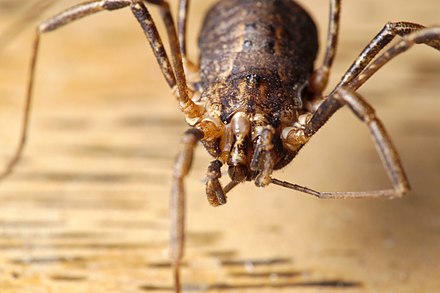Harvestman The Biology Of Opiliones Anatomy
Oct 20, 2014. A harvestman (a male Phalangium opilio), showing the almost fused arrangement of abdomen and cephalothorax that distinguishes these arachnids from. These arachnids have exceptionally long walking legs, compared to body size, although there are also short-legged species. In harvestmen. Aug 23, 2011. Becker Traffic Pro Kartenhaus. Arthropods generally—harvestmen are amongst the first groups to evolve fully modern body plans. 3 Department of Organismic and Evolutionary Biology and Museum of Comparative Zoology, Harvard University, Cambridge. Three-dimensional internal anatomy suggestive of an essentially modern. Feb 15, 2007. This is the first comprehensive treatment of a major order of arachnids featuring more than 6,000 species worldwide, familiar in North America as daddy-longlegs but known scientifically as the Opiliones, or harvestmen. The 25 authors provide a much-needed synthesis of what is currently known about. How can the answer be improved?
Opiliones are one of the largest arachnid orders, with more than 6,500 species in 50 families. Many of these families have been erected or reorganized in the last few years since the publication of The Biology of Opiliones. Recent years have also seen an explosion in phylogenetic work on Opiliones, as well as in studies using Opiliones as test cases to address biogeographic and evolutionary questions more broadly. Accelerated activity in the study of Opiliones evolution has been facilitated by the discovery of several key fossils, including the oldest known Opiliones fossil, which represents a new, extinct suborder.
Study of the group's biology has also benefited from rapid accrual of genomic resources, particularly with respect to transcriptomes and functional genetic tools. The rapid emergence and utility of Phalangium opilio as a model for evolutionary developmental biology of arthropods serve as demonstrative evidence of a new area of study in Opiliones biology, made possible through transcriptomic data. Figure 1 Exemplars of major Opiliones lineages: ( a) 3-D reconstruction of Hastocularis argus (Tetrophthalmi), from the Carboniferous, ( b) Aoraki longitarsa (Cyphophthalmi, Pettalidae), ( c) Acropsopilio neozealandiae (Dyspnoi, Acropsopilionoidea, Acropsopilionidae), ( d) Taracus sp. (Dyspnoi, Ischyropsalidoidea, Taracidae), ( e) Anelasmocephalus calcaneatus (Dyspnoi, Troguloidea, Trogulidae), ( f) Forsteropsalis pureora (Eupnoi, Phalangioidea, Neopilionidae), ( g) Caluga n. Car Pc Frontend Software Download here. (Eupnoi, Phalangioidea, Sclerosomatidae), ( h) Triregia fairburni grata (Laniatores, Triaenonychoidea, Triaenonychidae), ( i) Protimesius longipalpis (Laniatores, Stygnidae), ( j) Phareicranaus manauara (Laniatores, Gonyleptoidea, Gonyleptidae), and ( k) Fissiphallius martensi (Laniatores, Zalmoxoidea, Fissiphalliidae). Figure 3 Embryos of Phalangium opilio, the model system for study of embryonic development in Opiliones.

Fluorescent staining of cell nuclei in stage 10 ( a) and stage 17 ( b) embryos shows progressive segmentation in the posterior tagmata. Visual Studio 2010 Professional Product Key Generator. Examples of developmental processes investigated through developmental gene expression include segmentation, using engrailed ( c), wingless ( d), and pairberry ( e), and embryonic germ cell migration, using nanos ( f). Abbreviations: Ch, chelicera; ey, eyefield; hl, head lobe; L, leg; lb, labrum; O, opisthosomal segment; p, posterior region; Pp, pedipalp. All scale bars are 200 μm.





